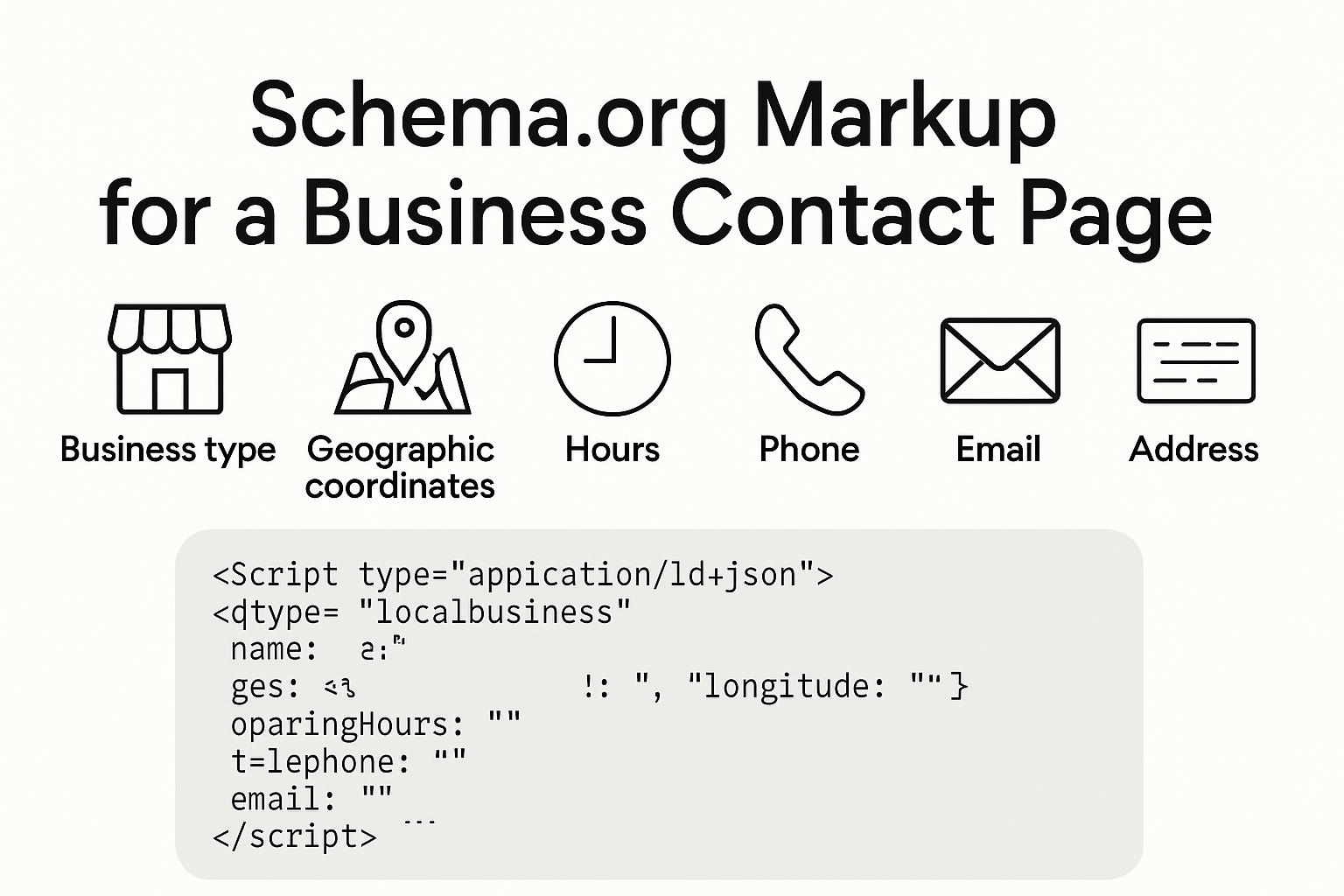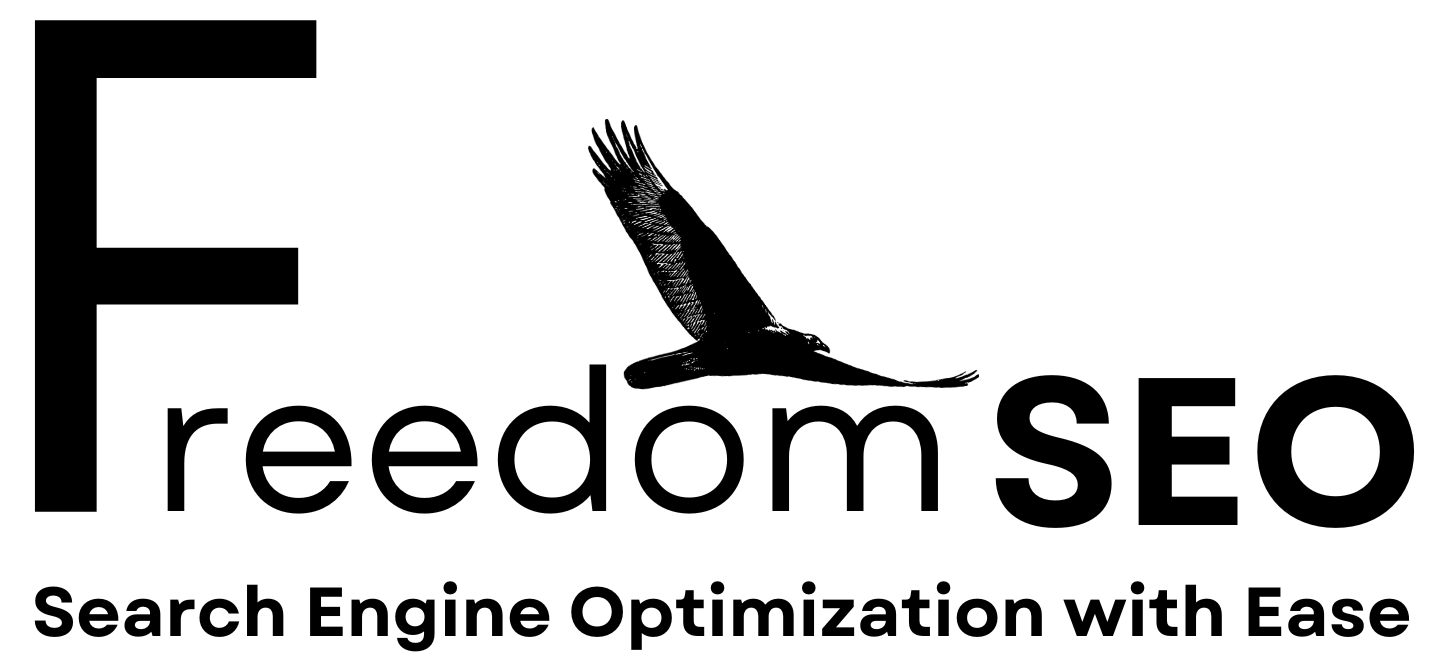Contact Page Best Practices for Canadian SEO Success

Your contact page is your business’s digital handshake and it might surprise you how much impact it has on your reputation and search rankings. Most businesses overlook the basics, yet over 40 percent of Canadian users say they abandon a site if contact info is unclear or hard to find . What if this one forgotten page could actually be your secret SEO weapon instead of a weak link?
Table of Contents
Quick Summary
| Takeaway | Explanation |
|---|---|
| Provide clear contact details | List your physical address, phone number, and email clearly to enhance communication and trust. |
| Design a user-friendly contact form | Minimize required fields and ensure mobile responsiveness to improve user engagement and submission rates. |
| Implement local SEO practices | Use consistent NAP details, incorporate regional keywords, and embed an interactive map for better local visibility. |
| Include trust signals and legal compliance | Add privacy statements, client testimonials, and professional certifications to build credibility and meet Canadian regulations. |
| Focus on accessibility and inclusivity | Design your contact page to be usable for all visitors, including multilingual support and compatibility with assistive technologies. |
Key Elements Every Contact Page Needs
A well-designed contact page is more than just a collection of contact details. It serves as a critical touchpoint between your business and potential customers, reflecting your brand’s professionalism and accessibility. For Canadian businesses seeking SEO success, crafting a strategic contact page requires careful consideration of both user experience and search engine optimization principles.
Clear and Comprehensive Contact Information
The foundation of an effective contact page is providing clear, comprehensive contact information that makes it easy for visitors to reach your business. According to the U.S. Department of Energy , each page should have a unique title that clearly indicates its content. For a contact page, this means presenting information in a structured and accessible manner.
Your contact details should include multiple communication channels. Essential elements include:
- Physical Address : Complete business location with postal code
- Phone Number : Preferably local Canadian area code
- Email Address : Professional email that matches your domain
- Business Hours : Clearly displayed operating times
Incorporating a local phone number and address helps validate your business for both users and search engines, which is particularly important for local SEO strategies.
User-Friendly Contact Form Design
A strategically designed contact form can significantly improve user engagement and conversion rates. The University of Rochester recommends creating contact forms that are intuitive and collect essential information efficiently.
Key considerations for your contact form include:
- Minimal Required Fields : Only request necessary information
- Clear Labels : Use straightforward, descriptive field labels
- Error Handling : Provide immediate, helpful feedback for incomplete or incorrect submissions
- Mobile Responsiveness : Ensure the form works seamlessly across all devices
By streamlining the contact process, you reduce friction and increase the likelihood of potential customers reaching out to your business.
Strategic SEO Optimization Techniques
Beyond basic contact information, your page should be optimized for search engines. The State of Georgia’s Digital Services advises that contact information should be easily discoverable, typically as a main navigation item in your website menu.
SEO-friendly practices for your contact page include:
- Unique, Descriptive Page Title : Incorporate location and business type
- Structured Data Markup : Implement schema.org contact information markup
- Contextual Content : Add a brief paragraph explaining your business’s commitment to customer communication
- Fast Page Load Speed : Optimize images and minimize unnecessary scripts
Remember, your contact page is not just a functional necessity but an opportunity to reinforce your brand’s professionalism and approachability. By implementing these key elements, Canadian businesses can create contact pages that not only serve user needs but also contribute to overall SEO performance.
To help readers quickly compare and understand the essential elements recommended for a high-converting and trustworthy Canadian contact page, here’s a summary table of key features and why each matters:
| Contact Page Element | Why It’s Important |
|---|---|
| Physical Address | Validates local business presence, aids local SEO |
| Phone Number | Enhances trust, supports direct communication |
| Email Address | Professionalism; matches business domain |
| Business Hours | Sets expectations for customer response |
| Contact Form (Minimal Fields) | Reduces friction, increases conversions |
| Clear Privacy Statement | Meets Canadian legal standards, builds user trust |
| Trust Badges/Certifications | Conveys credibility and industry compliance |
| Accessibility Features | Ensures inclusivity, meets regulatory requirements |
Design Tips for Higher Engagement
Effective contact page design goes beyond aesthetics. It requires a strategic approach that combines visual appeal, user experience, and psychological principles to encourage visitor interaction. For Canadian businesses, creating an engaging contact page can significantly impact conversion rates and brand perception.
Visual Hierarchy and Trust Signals
Visual design plays a crucial role in building user trust and guiding visitor attention. According to Nielsen Norman Group , strategic visual hierarchy helps users process information more efficiently and makes key elements stand out.
Key visual design strategies include:
- Professional Color Scheme : Use colors that align with your brand identity
- High-Quality Images : Include professional photos of your team or business location
- Trust Badges : Display certifications, awards, or professional memberships
- Clean Layout : Implement whitespace to improve readability and focus
By creating a visually appealing and professional design, you signal credibility and encourage potential customers to engage with your contact page. Our guide on web design principles offers additional insights into creating compelling visual experiences.
Interactive Elements and User Experience
Interactive design can transform a static contact page into an engaging user experience. Google’s Web Fundamentals emphasizes the importance of creating intuitive, responsive interfaces that anticipate user needs.
Consider implementing:
- Live Chat Integration : Provide immediate communication options
- Dynamic Form Validation : Offer real-time feedback during form completion
- Personalization Elements : Customize form fields based on user selection
- Accessibility Features : Ensure the page is usable for all visitors
These interactive elements not only improve user engagement but also demonstrate your commitment to customer service and technological innovation.
Psychological Triggers and Conversion Optimization
Understanding user psychology can dramatically improve contact page performance. Effective design incorporates subtle psychological triggers that encourage action and build confidence.
Psychological design techniques include:
- Social Proof : Display client testimonials or success stories
- Clear Value Proposition : Explain why users should contact you
- Minimal Friction : Reduce form complexity and required steps
- Urgency Indicators : Use subtle prompts that encourage immediate action
By thoughtfully integrating these design principles, Canadian businesses can create contact pages that not only look professional but actively encourage user interaction and conversions. Remember, your contact page is often the first direct interaction potential customers have with your brand—make it count.
SEO Strategies for Contact Pages
Contact pages represent more than just a communication channel. For Canadian businesses, they are strategic SEO assets that can significantly enhance online visibility and local search performance. Implementing targeted optimization techniques transforms these pages from simple information repositories into powerful digital marketing tools.
Local SEO Optimization Techniques
Search Engine Land highlights the critical importance of NAP (Name, Address, Phone number) consistency for local SEO success. Canadian businesses must ensure their contact information remains identical across all digital platforms, creating a robust local search signal.
Key local SEO strategies include :
- Precise Geographic Targeting : Include specific Canadian province and city details
- Local Phone Number : Use area codes specific to your business location
- Embedded Google Maps : Integrate an interactive map showing exact business location
- Regional Keywords : Incorporate location-specific search terms naturally
By implementing these techniques, businesses can strengthen their local search presence. Learn more about optimizing location pages to maximize your regional digital strategy.
Structured Data and Schema Markup
Google’s official documentation emphasizes the transformative power of structured data for enhancing search engine understanding. Schema markup provides search engines with precise, machine-readable information about your business, potentially improving rich snippet appearances and search rankings.
Critical schema markup elements for contact pages include:
- Business Type Classification : Accurately define your industry category
- Geographic Coordinates : Provide precise latitude and longitude
- Operating Hours : Detail complete business availability
- Contact Information : Markup phone, email, and physical address
Properly implemented schema markup acts as a direct communication channel with search algorithms, helping them comprehend and represent your business more effectively.

Content Optimization and Keyword Integration
Beyond technical implementations, contact pages require strategic content optimization. The goal is creating informative, keyword-rich content that serves both user experience and search engine requirements.
Effective content optimization strategies:
- Natural Keyword Inclusion : Integrate location and service-related keywords
- Comprehensive Business Description : Provide context about your services
- FAQ Section : Address common customer queries
- Clear Call-to-Action : Guide users toward desired interactions
These techniques transform contact pages from mere functional elements into sophisticated SEO tools. By combining technical precision with strategic content development, Canadian businesses can elevate their digital presence, making contact pages powerful mechanisms for attracting and converting potential customers.
Canadian-Specific Legal and Trust Signals
Contact pages for Canadian businesses demand a nuanced approach that balances legal compliance, digital trust, and user confidence. Understanding the unique regulatory landscape and implementing robust trust signals can transform your contact page from a simple communication tool into a powerful mechanism for building credibility.
Privacy and Data Protection Compliance
Canadian businesses must navigate complex privacy regulations, primarily governed by the Personal Information Protection and Electronic Documents Act (PIPEDA). Research from the University of Ottawa emphasizes the critical importance of transparent data handling practices on digital platforms.
Key compliance considerations include :
- Clear Privacy Statement : Explicitly detail how user information will be collected, used, and protected
- Consent Mechanisms : Provide transparent opt-in processes for data collection
- Data Retention Policies : Outline specific timelines for information storage
- User Rights Explanation : Describe how individuals can request data access or deletion
By integrating these elements, businesses demonstrate legal sophistication and respect for user privacy. Explore our comprehensive guide on legal service digital strategies to further understand regulatory nuances.
Trust Signals and Credibility Indicators
Trust signals go beyond legal compliance. According to research from Renaud and Shepherd , effective digital trust involves creating transparent, user-friendly interfaces that communicate reliability and professionalism.
Essential trust-building elements for Canadian contact pages include:
- Professional Certifications : Display industry-specific accreditations
- Business Registration Numbers : Show official provincial business registration
- Client Testimonials : Include verified, authentic customer experiences
- Security Badges : Highlight data protection and secure communication protocols
These signals reassure potential customers about your business’s legitimacy and commitment to professional standards.
Accessibility and Inclusive Design
Canadian businesses must also consider accessibility requirements, particularly the Accessible Canada Act. Designing contact pages that accommodate diverse user needs demonstrates social responsibility and legal awareness.
Inclusive design strategies encompass:
- Multilingual Support : Offer contact information in English and French
- Screen Reader Compatibility : Ensure form fields and content are compatible with assistive technologies
- High Color Contrast : Design with visibility for users with visual impairments
- Alternative Contact Methods : Provide multiple communication channels
By implementing these comprehensive legal and trust-building strategies, Canadian businesses can create contact pages that not only meet regulatory requirements but also genuinely connect with potential customers.
For Canadian businesses striving for legal compliance and trust, here’s a checklist of privacy, trust, and accessibility features your contact page should include:
| Feature | Required for Compliance | Builds Trust/Professionalism |
|---|---|---|
| Clear Privacy Statement | Yes | Yes |
| Consent Mechanisms | Yes | Yes |
| Data Retention Policy | Yes | No |
| User Rights Explanation | Yes | Yes |
| Professional Certifications | No | Yes |
| Business Registration Number | No | Yes |
| Client Testimonials | No | Yes |
| Security Badges | No | Yes |
| Multilingual Support | Yes* | Yes |
| Accessibility Features | Yes* | Yes |
*Depends on jurisdiction and business type.
The goal is to transform a simple contact page into a powerful trust-building asset that reflects your commitment to professionalism, user privacy, and inclusive communication.
Frequently Asked Questions
What are the essential elements for an effective contact page?
To create an effective contact page, include clear and comprehensive contact information such as your physical address, phone number, email address, and business hours. A user-friendly contact form with minimal required fields is also crucial for engaging visitors.
How can I optimize my contact page for local SEO?
To optimize your contact page for local SEO, ensure your Name, Address, Phone number (NAP) details are consistent across your site and other digital platforms. Incorporate regional keywords, include an embedded Google Map, and use a local phone number with the appropriate area code.
What legal compliance should Canadian businesses consider for their contact pages?
Canadian businesses should adhere to privacy regulations such as the Personal Information Protection and Electronic Documents Act (PIPEDA). Include a clear privacy statement detailing data collection practices, consent mechanisms, and users’ rights regarding their information.
How can design elements affect user engagement on my contact page?
Design elements like visual hierarchy, color scheme, and trust signals play a significant role in user engagement. A clean layout with professional images, trust badges, and interactive features like live chat can encourage visitors to connect with your business.
Turn Your Contact Page Into a Real Canadian Business Asset
Many Canadian businesses struggle to turn website visits into genuine leads, mostly because their contact page falls short. If your contact details are unclear, your form is difficult to use, or your legal and trust signals are missing, you risk losing valuable customers before you even connect. The good news is, optimizing this single page can boost your search rankings, build trust with local customers, and set you apart from the competition. We understand the unique Canadian market and bring proven expertise in local SEO services and conversion-focused web design that align directly with the strategies outlined in this guide.

Ready to see more leads and grow your business in your city? Let us help you apply these best practices today. Visit our website and landing page solutions or reach out to our SEO experts for a free consultation. Transform your contact page into your strongest business introduction and take your spot in Google’s top 3. Act now to claim your edge before your competitors do.
Recommended
-
[
Location Pages for SEO: Proven Tips for Canadian Businesses 2025
]( https://freedomseo.ca/location-pages-for-seo-proven-tips-for-canadian-businesses-2025 )
-
[
Service Page SEO Tips for Canadian Business Owners 2025
]( https://freedomseo.ca/service-page-seo-tips-for-canadian-business-owners-2025 )
-
[
Writing SEO Friendly Content: 2025 Tips for Canadian DIY SEO
]( https://freedomseo.ca/writing-seo-friendly-content-2025-tips-for-canadian-diy-seo )
-
[
Landing Page Optimization Tips for Canadian Businesses 2025
]( https://freedomseo.ca/landing-page-optimization-tips-for-canadian-businesses-2025 )

















